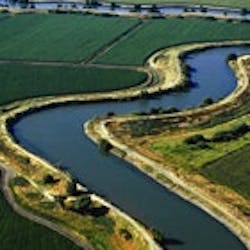EPA Announces Nearly $300 Million in Federal Funding for California Infrastructure Improvements
The U.S. Environmental Protection Agency (EPA) announced nearly $300 million in federal funding to improve aging water and wastewater infrastructure and protect human health and the environment for California. This new infusion of money through infrastructure capitalization grants will help state and local governments finance many of the overdue improvements to water projects that are essential to protecting public health and the environment throughout California.
“Today our water infrastructure is working harder than ever to address growing populations, new and old pollution challenges and tightening budgets,” EPA Administrator Lisa P. Jackson said. “With nearly $300 million in EPA support, California will be able to put people to work and ensure clean, healthy water in their environment and safe drinking water in their homes."
“Investing in our infrastructure will not only enhance our long-term economic growth and global competitiveness, it will also create jobs now when we need them the most,” said California Governor Arnold Schwarzenegger. “With $300 million, we’ll be able to get Californians working to improve our aging water infrastructure and spearhead innovative new projects that will benefit our environment and economy. I applaud the U.S. EPA for their foresight in providing this federal funding.”
The EPA has awarded $127 million to the California Department of Public Health for drinking water infrastructure projects and $147 million to the State Water Resources Control Board for wastewater projects. The funding will update sewage and water treatment facilities and support drinking water projects in Northern, Central and Southern California. At least 20% of the funds provided are to be used for green infrastructure, water and energy efficiency improvements, and other environmentally innovative projects.
The following California municipalities are currently pursuing a funding agreement, pending a technical, environmental and/or financial review: Fresno, Klamath, Tehachapi, Merced, Sonoma, Monterey, Riverside, San Bernardino, San Diego, Stockton, Shasta, Los Angeles, San Francisco, Santa Barbara, Santa Clara, Redding, Yucaipa, Castro Valley, Seal Beach, Santa Cruz, Turlock, San Clemente, Alameda, Solano, Brea, Mendocino, Salinas, East Palo Alto, Sacramento, Oakland, Modesto, Thousand Oaks, Vacaville, Fontana, Arvin, Banning, Atwater, Sausalito, Orange County, San Leandro, Beverly Hills, Pismo Beach, La Puente, San Luis Obispo, Morro Bay, Hollywood and many others. For a full list of potentially fundable projects, please see the recipients identified in the links below.
The funding will be distributed by the Water Resources Control Board and the California Department of Public Health. The funds will provide low-interest loans and principal forgiveness loans for water quality protection projects for wastewater treatment, non-point source pollution control, and watershed and estuary management. They will also provide low-interest loans or principal forgiveness loans for drinking water systems in order to finance infrastructure improvements. The programs emphasize funding for small and disadvantaged communities and encourage pollution prevention as a tool for ensuring safe drinking water.
Source: U.S. EPA
